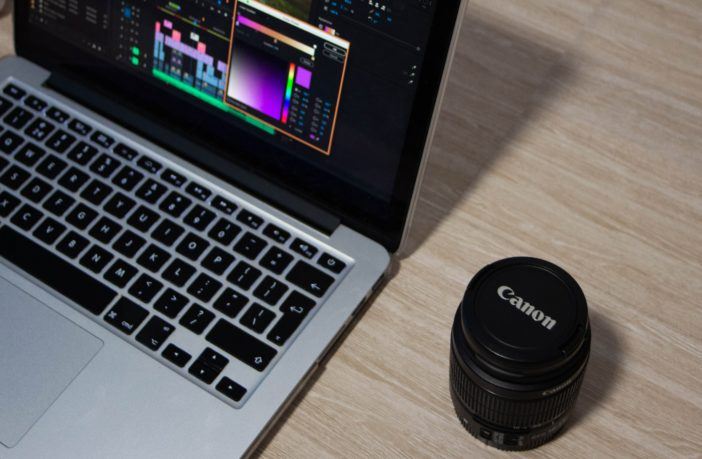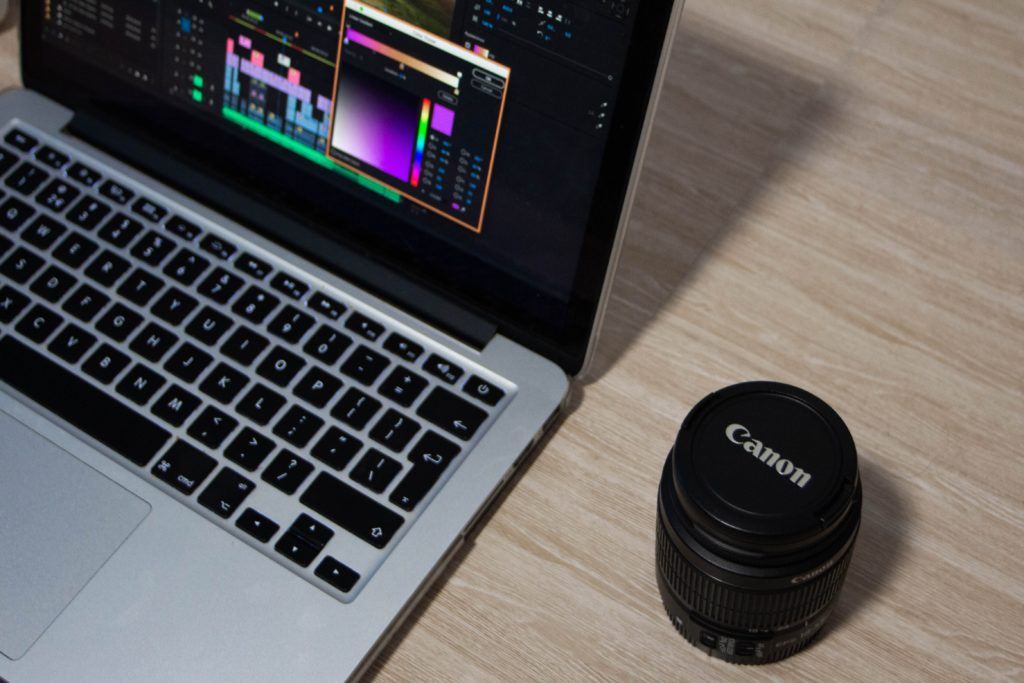It may be hard to think of it now, but photo-editing used to be a challenge. Back in the day, digital retouching would have cost you hundreds of dollars!
Now, we can quickly crop, change colors, and adjust the lighting in a matter of seconds. Photo editing software is built straight into our phones and personal computers.
We can even pick from dozens of photo-editing software, all with their own functions and capabilities. Of all the photo-editing software that is available to us today, Photoshop is one of the most powerful and most popular.
In fact, its popularity has turned the trademark in a verb; to ‘photoshop an image’ means to alter it. While Adobe doesn’t approve of its usage, the verb belies Photoshop’s beloved nature in modern technology.
Contents
What is Photoshop?
Developed in 1987, Photoshop was made by two brothers: Thomas and Jon Knoll. Thomas Knoll originally wrote the program to display grayscale images; it was his brother who suggested that he turn it into an image-editing program.
Later that year, they named their software Photoshop. The year after that, Apple released Photoshop 1 exclusively for Macintosh.
Since then, Photoshop has dominated the image-editing industry. Because of its powerful features, Photoshop has become the industry standard, continuing to add more features for designers, artists, and photographers worldwide.
Cost of Photoshop
How much does Photoshop cost? Adobe Photoshop has three different pricing plans. They are:
- Photoshop Single App: $239.99 for a license of just the Photoshop app, with all the updates you need. This also includes 100 GB cloud storage, with your own portfolio website.
- Creative Cloud Photography Plan: $199.88, for a license of both Photoshop and Lightroom. This plan is geared towards photographers and includes Photoshop for editing photos, as well as Lightroom for photo management mass editing, plus 20 GB or 1 TB cloud storage.
- Creative Cloud Apps: $599.88 for all Adobe Creative Apps.
All prices are for their annual payment plans, but monthly payment plans are also available. Each plan comes with a license for two computers.
Cancelling the annual fees requires you to pay 50% of the remaining months. You don’t have to do this for the monthly subscription, but you won’t get the discount available for the annual subscription, either.
You can get a demo version of Photoshop online, free of any charges on the official Adobe website. However, compared to other photo-editing software, Photoshop has steep prices. Is this price worth it?
Photoshop Capabilities
Photoshop is arguably one of the most powerful photo-editing software, so much so that it is used for more than just photo-editing.

Photoshop is also popular in the digital art and graphic design industries. How does this one software manage to accomplish so much?
Among its myriad of drop-down menus and tools, here are some of the most essential features of Adobe Photoshop.
Customizable UI
Photoshop’s UI is comprised of different palettes. Mirroring the same way artists would prepare their work desk – a bottle of ink in one corner, their brushes to their right – Photoshop’s UI is as clever as it is intuitive.
Photoshop lets you select ‘palettes’ or menus that float on your UI, which you can freely drag around as you wish.
Palettes can also be attached to each other, so you can open and close them like you would drawers in real life. With this intuitive UI design, you can easily keep your workspace focused and clean.
Layers
Of all the palettes, Layers is perhaps one of the most important.
Creating what is a huge advantage over traditional ways of photo-manipulation and illustration, Layers allows you to work on an element of your project without affecting other elements.
In real life, once you make a wrong stroke, you have to trash the entire painting. With Photoshop, the mistake is contained within that layer.
You can delete the whole layer and start over—or erase just that mistake without affecting other layers.
Layers are also powerful on their own, as you can change the opacity, add a filter, or change the blending mode of all elements on one layer.
You can also lock layers, so you can group them for easy viewing, avoid accidentally adding or deleting, and many other options.
Selection Tools
For photo-editing, Photoshop’s selection tools are a godsend. These tools give an incredible amount of control over a selection, so you can alter an image down to the pixel.
It gives designers an ability to create details that cannot be developed in other software.

The Magic Wand tool is truly something magical. It allows you to select parts of your image based on color sampling. The different lasso tools also allow you to select portions of your work.
Choose from any of the tools; the lasso tool is a freeform tool that you can use to outline your selection. The polygonal lasso tool creates sharp edges between each point.
The magnetic lasso tool uses color sampling to detect the outline of a shape; just drag the tool over your image and it will automatically outline the shape.
Behance
A subscription to Photoshop CC comes with other perks too, like a membership with Behance. Behance is a wonderful online community of artists where you can publish your work.
On Behance, you can easily attract future clients, or get feedback from other designers, artists, and photographers.
A Behance membership comes with a subscription to Photoshop CC, making the package a great deal. Publishing your project on Behance is also as easy; just click File, then Share to Behance.
Saving to Cloud
With a Photoshop subscription, you can easily save your photos to the cloud. No more accidentally deleting a file or leaving a file at work!
The ease of cloud storage also means that you can just open Photoshop on any device you have, and quickly continue where you left off.
Cloud storage and sync are automatic with Photoshop, so you don’t have to worry about your files being deleted or forgotten.
You can even share a file straight from the app, which means that you can quickly update your clients and collaborators with your progress.
This video shows some basics in Photoshop.
Should I Buy Photoshop?
Ultimately, the choice of whether or not you need Photoshop depends on what you’re using it for.
If you’re just editing your photos for friends and family, the price (and learning curve) of Photoshop probably isn’t for you.
However, if you’re an industry professional, you may want to consider Photoshop and other Adobe Creative Apps. You clients and collaborators will expect you to work in Photoshop.
File compatibility won’t be a problem with some software alternatives, but some misunderstandings may crop up if you’re using different software than what’s expected.
However, if you feel like Photoshop isn’t for you, you’re in luck! There are many Photoshop alternatives.
Cheap and Free Photoshop Alternatives
The many functions and capabilities of Photoshop come with a price—and what a hefty price it is.
Photoshop is a subscription-based software; using Photoshop can cost you anywhere from 10 to 50 dollars every month. While this can be fine for professional photo editors, the rest of us can’t justify the expense.
Thankfully, there are a lot of programs that have stepped up to meet the demand. If you’ve ever wanted an alternative to Photoshop, there are free alternatives abound from every corner.
A lot of these alternatives are cheaper—some are even free. So, if Photoshop’s price is out of your budget, find it too confusing, or you want to support smaller developers, here is a list of cheap Photoshop alternatives.
GIMP
GIMP stands for GNU Image Manipulation Program and is widely touted as a free version of Photoshop.
As such, GIMP is a powerful image-editing software that can rival Photoshop capabilities; it has a lot of features that makes editing photos a breeze.
Color correction, selection tools, painting, and filters abound in this free software. Its UI is also made of free-floating toolsets, making it similar to Photoshop’s UI.

Unfortunately, like Photoshop, GIMP can take a while to master, mainly due to its large array of tools. People who are already familiar with digital photo editing will still need time adjusting to this software.
However, there are numerous tutorials that can help you master GIMP in no time. GIMP is completely free and available on Linux, Mac, and Windows.
Paint.net
Paint.net is a wonderful open-source software that is a great Photoshop alternative. Originally shipped as part of some versions of Windows, it’s often used as an alternative to the basic Windows Paint.
It currently exists as an open-source freeware, maintained by alumni of a Microsoft-sponsored undergraduate project.
Paint.net is continually updated with newer features, and you can see all the coding behind it online, for free. Despite its humble origins, Paint.net has a lot of helpful tools.
Compared to GIMP, Paint.net has fewer features, but that also makes it easier to master. You can edit your photos with automatic filters, manual editing tools, and layers.
Like Photoshop, its wide selection of plug-ins makes Paint.net a powerful software without the price tag.
Another great aspect of Paint.net is that it’s very light on RAM. You don’t have to wait for Paint.net to load; for slower computers, this could be a life-saver.
Paint.net is completely free and available for Windows.
Pixlr
For those who just want a quick photo edit, Pixlr is for you. This photo editing software comes with more than 600 effects, perhaps the largest number on the market.
With just a few taps on your phone, you can quickly transform your photos into works of art.
For those who are used to the Photoshop UI, you’re in for a treat. Pixlr’s web version has a very similar UI to Photoshop, and has the same basic photo-correcting features, like cropping, resizing, and removing red-eye.
However, Pixlr also suffers from Photoshop’s other downfall—too many options. For this reason, Pixlr can be difficult to learn.
Pixlr is available for free, with upgrades at $1.99 a month or $14.99 a year. It can be used on iOS, Android, and web browsers.
SumoPaint
Despite its browser-based nature, SumoPaint is another great alternative to Photoshop. It has all the features Photoshop enthusiasts expect and works as a great image editor or painting application.

Among SumoPaint’s features are the blur, smudge, and clone tools, plus many fun filters. It also has layer and layer masking capabilities. Combined with its clean and intuitive UI, SumoPaint can help you achieve an efficient workflow.
What’s great about SumoPaint is that it’s more than just a photo-editing tool; it’s a community, too. Artists, graphic designers, and photographers make the online SumoPaint community an ideal place for beginners.
You can easily ask questions and gain feedback for your projects. With 4 million users from 200 countries, SumoPaint’s online community can be just as important as all their features combined.
SumoPaint is free, with a pro version that costs $19 per year. With the pro version, you can download and work on your projects offline, and even sell your artwork through their community.
SumoPaint can be run on any browser with an iPad app.
Affinity
The biggest thing stopping professionals from switching to an alternative is that Photoshop is an industry standard.
The industry often expects you to receive and send projects as PSD files. This can be a problem for those who can’t use Photoshop.
It doesn’t matter if you’ve found the perfect non-Photoshop software for you; if you can’t open the files your clients give you, your effort may stall.
Thankfully, Affinity has all the important Photoshop features—and is fully compatible with Photoshop file formats. Affinity’s features also support professional use, with color spaces and profiles, customizable toolbars, and an unlimited undo.
On top of all of that, Affinity’s UI is clean, sleek, and customizable. Designed by professional photographers, Affinity’s UI has everything you need where you need them.
Affinity is free to try and is available for Mac, Windows, and iPad. It has a Pro version for a one-off payment of $49.99.
Here’s a video explaining more about this free version of Photoshop.
Conclusion
Hopefully, this list has helped you find the best software for you, whether it’s Photoshop or an alternative!
Of course, any tool is as good as the artist that uses it, and functionality is second to skill and commitment.
So, whether it’s photos for your next family outing or a client’s wedding, may you find the tools to bring your photos to greater heights.
Do you prefer photoshop versus a free version of photoshop?





